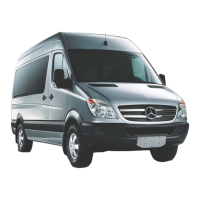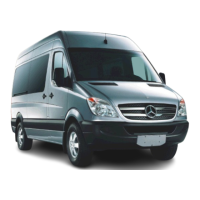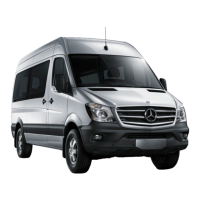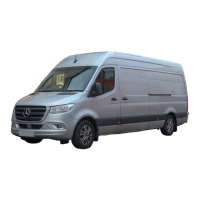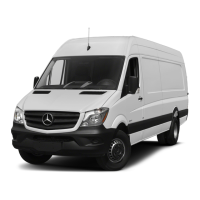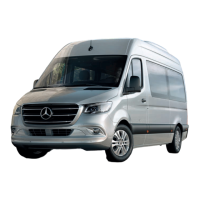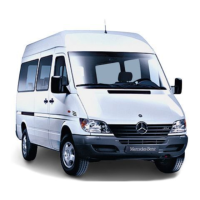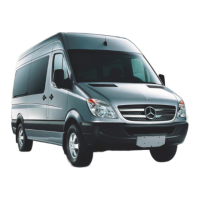R
Use snowchains only when theroad surface
is completely snow-covered. Remove the
snowchains as soon as possiblewhen you
come to aroad that is notsnow-covered.
R
Local regulations mayrestrict theuse of
snowchains. Observe theapplicable regula‐
tions beforeinstalling snowchains.
R
Activateall-wheeldrive before driving offwith
snowchains (/ page120).
R
If snowchains areinstalled, themaximum
permissible speed is 30 mph(50 km/h).
R
Vehicles with Parking Assist: do notuse
Parking AssistPARKTRONIC if snowchains
areinstalled.
%
Youcan deactivateESP
®
to pull away
(/ page139). This allows thewheels to
spin, achieving an increased driving force.
Tire pressure
Notesontirepressure
&
WARNING Risk of accident duetoinsuf‐
ficient or excessivetirepressure
Underinflatedoroverinflatedtires pose the
following risks:
R
The tires mayburst,especiallyasthe load
and vehicle speed increase.
R
The tires maywear excessively and/or
unevenly,which maygreatly impair tire
traction.
R
The driving characteristics, as well as
steering and braking, maybegreatly
impaired.
#
Complywiththe recommended tire
pressureand checkthe tirepressureof
all tires including thesparewheel regu‐
larly:
R
at leastonce amonth
R
when theload changes
R
beforeembarkingonalongerjourney
R
if operating conditions change, e.g.off-
road driving
#
Adjustthe tirepressureasnecessary.
Driving with tirepressurethat is toohigh or too
lowcan:
R
Shortenthe service lifeofthe tires.
R
Cause increased tiredamage.
R
Adversely affect handling characteristicsand
thus drivingsafety, e.g. due to hydroplaning.
&
WARNING Risk of an accident dueto
insufficient tirepressure
Tireswithpressurethat is toolow can over‐
heat and burst as aresult.
In addition,theyalso sufferfromexcessive
and/or irregular wear,whichcan significantly
impair thebraking properties and thehan‐
dling characteristics.
#
Avoid excessively lowtirepressures in
all thetires, including thesparewheel.
Tire pressurewhichistoo lowcan cause:
R
Tire malfunctions as aresult of overheating
R
Impaired handling characteristics
R
Irregular wear
R
Increased fuel consumption
&
WARNING Risk of accident from exces‐
sivetirepressure
Tireswithexcessively high pressurecan burst
because they aredamaged moreeasilyby
highway fill, potholes etc.
In addition, they also sufferfromirregular
wear,whichcan significantlyimpair thebrak‐
ing properties and thehandling characteris‐
tics.
#
Avoid excessively high tirepressures in
all thetires, including thesparewheel.
Excessively high tirepressurecan result in:
R
Increased braking distance
R
Impaired handling characteristics
R
Irregular wear
R
Impaired drivingcomfort
R
Susceptibility to damage
&
WARNING Risk of accident caused by
repeated drop in tirepressure
If thetirepressuredrops repeatedly,the
wheel, valveortiremay be damaged.
Insufficient tirepressure can cause thetires
to burst.
#
Inspect thetirefor signs of foreign
objects.
296
Wheels and tires
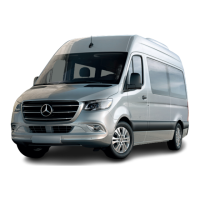
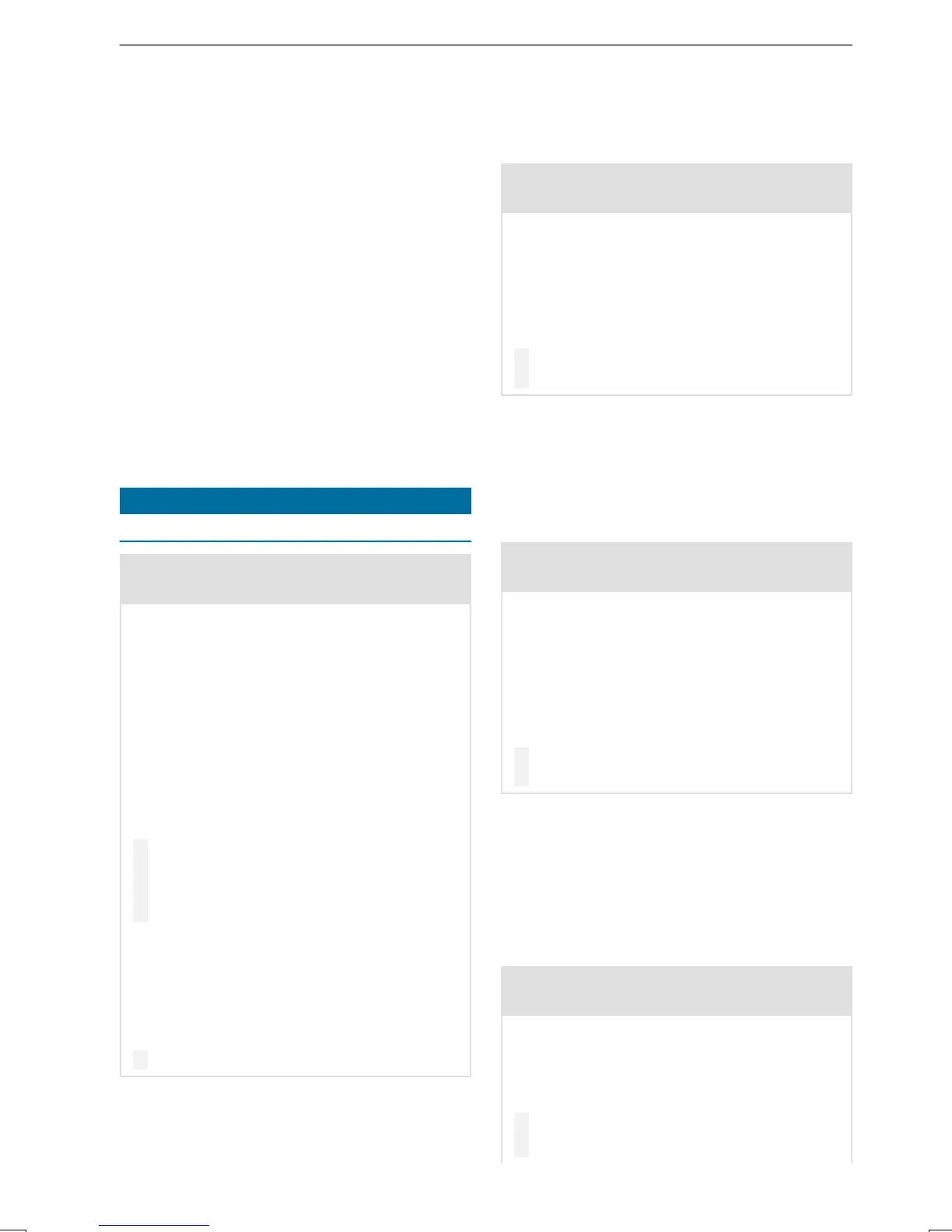